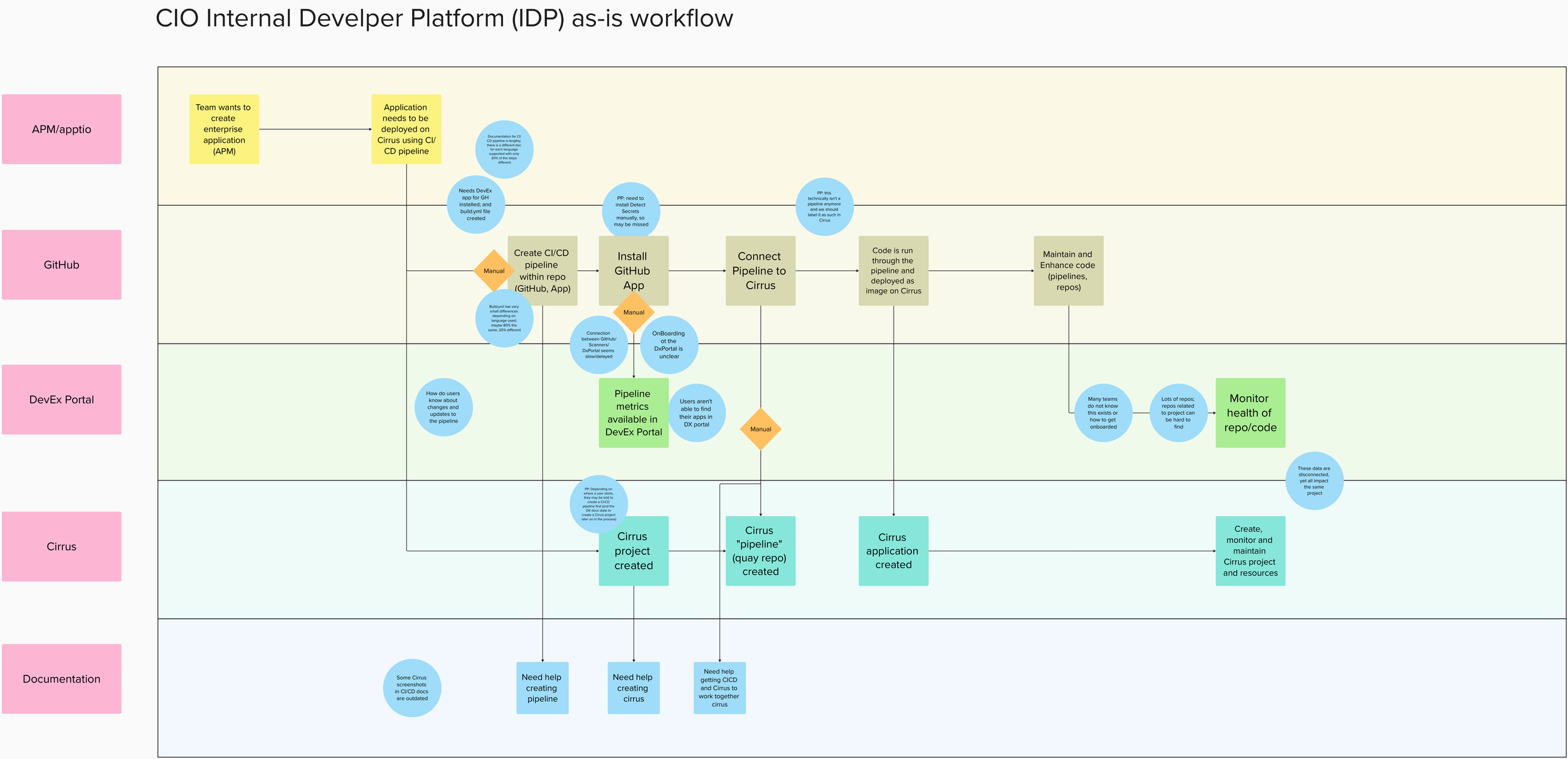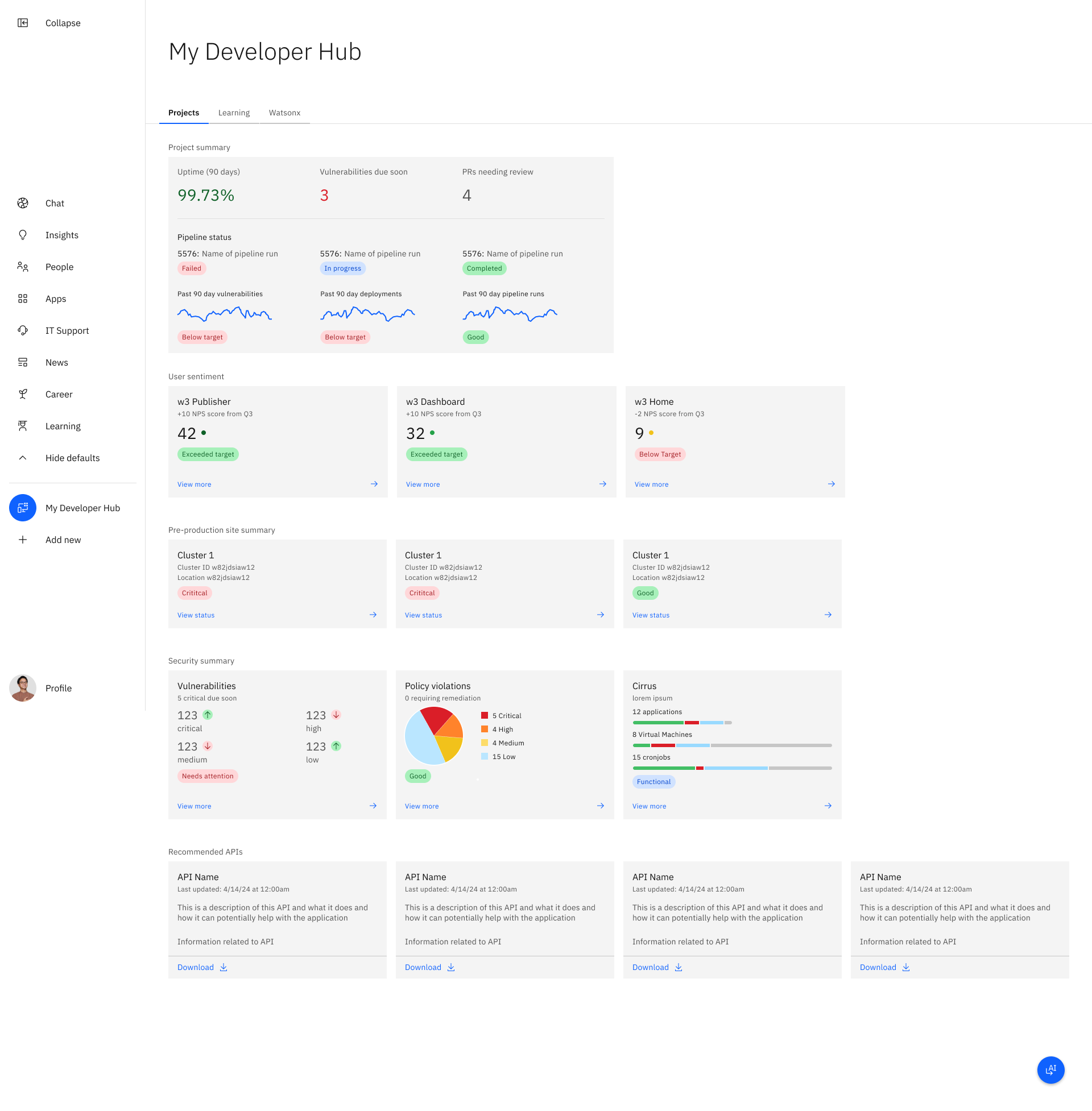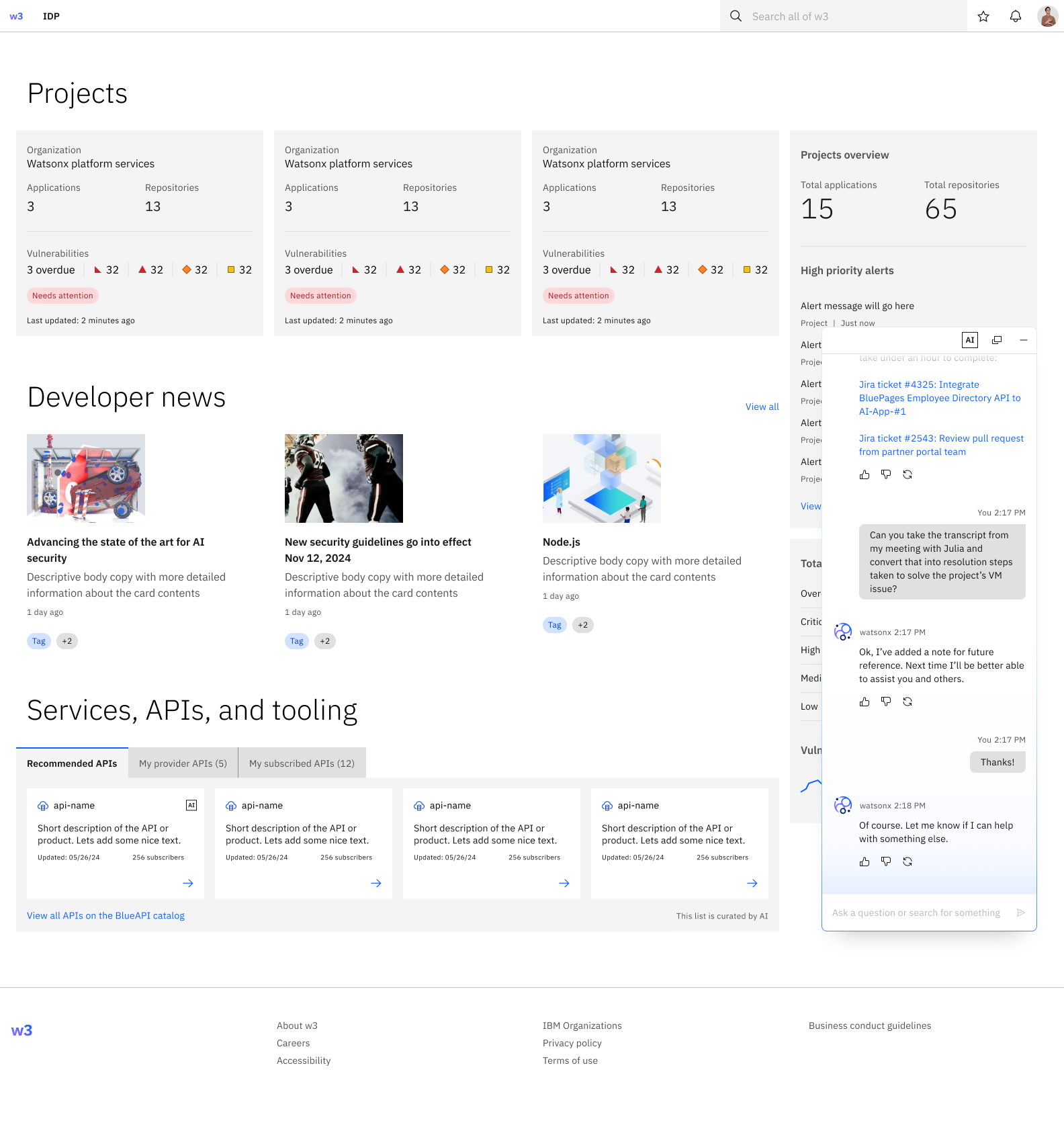Developer Experience
Evaluate current process for developers. Create friction analysis, highlighting core inefficiencies. Propose streamlined tool set and process, enabling transformation and much higher productivity
Developer tools are fragmented
The developer experience is changing, and developers need help
BEFORE
• Disjointed tools servicing one audience
• Communication of new processes haphazard
• Different parts of the process do not talk to each other
• Need a more consistent way of working
• Organizational challenges
Blue circles indicate manual transitions. Swim lanes are individual applications. Green circles and diamonds are system automations and built in workflow.
AFTER
• Single source of data
• Integrated system allows for future automation
• Centralized messaging platform
• AI guided documentation experience
Developers are absolutely essential to the success of any tech company. As we continue to shift towards a landscape characterized by more AI-driven interactions, it becomes increasingly clear that we need to adopt new development methods and tools that align with this evolution.
IBM's development environment has seen notable expansion, allowing teams to quickly become more agile and modernize their applications effectively. This expansion has resulted in a variety of tools and processes being utilized across different teams.
Currently, there are concerted efforts being made to standardize these tools by replacing many disparate options with centralized solutions.
This transformation is progressing quite well, but it is imperative that we accelerate these efforts, as the demand for change is projected to increase significantly in the coming AI-driven era. Achieving this ambitious goal requires a more unified organizational structure that fosters collaboration.
An integrated developer platform will not only promote consistent change and improvement but will also minimize the necessity for extra resources, relying instead on enhanced coordination among teams.
To overcome the organizational problems, I took two approaches.
ONE: Understand the current workflow through a user journey and establish the pain points and integration points.
TWO: Provide vision for how the teams can be reorganizes with the same resources to tackle this problem focusing mostly on coordination as opposed to allocating more of our limited resources.
This approach gained buy-in from the teams on the ground, and tacit agreement at the top.
Next we created appealing designs to show the vision in a tangible way to help convince the CIO to make changes to our OKRs in order to facilitate this cooperation.
In a large company, a design change may start at the organizational level, before the detailed designs can be created. Begin with a vision and communicate that vision to the leadership.
A single place for developers to go to get new information and training will be key to this transformation.
As the AI infrastructure takes shape, it will need to go where the users are yet be persistent (i.e. remember conversations from the past and know context). Thus we provided a VSCode instance of our WatsonX assistant.




